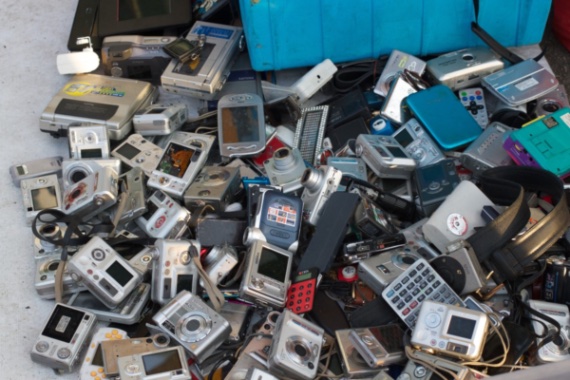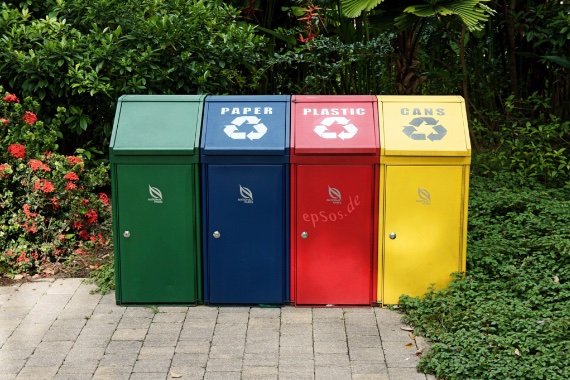The urgent need to combat climate change requires that we transition away from fossil fuels as rapidly as possible. The scientific consensus, based on evidence, is clear this is the only viable path forward, with no alternatives or shortcuts. But while this is the most critical action to take, it is not the only one. Nor are governments and industry the only entities involved in the necessary transformation. The battle against climate change is being fought on many fronts, and one of them is that of the consumer in their daily habits. Over the last 12 months, we have been looking at the various ways that individuals can make a positive impact through their own actions and decisions, dispelling along the way some myths that may arise from personal interests or a lack of complete and unbiased information. Now, as we conclude this series, let’s take a moment to review all that we have learned.
1. What can I do about climate change?
Although the primary responsibility for the transition to a more sustainable world lies with governments and industry, the former serve the public, and the latter produces what we consumers buy. In short, it is all in our hands. Households directly emit 20% of total greenhouse gas (GHG) emissions, but if we add indirect emissions through the products and services we consume, the figure rises to 60%. So we are part of the problem, and we must be part of the solution too.
2. Household energy consumption, the new battlefield against climate change
Households play a significant role in contributing to greenhouse gas (GHG) emissions from energy consumption, on par with industries. Both direct emissions, such as burning fossil fuels for cooking and heating, and indirect emissions, such as using electricity, account for a quarter of household GHGs. While governments have the responsibility to decarbonise the energy sector, individuals can also make a difference by adopting energy-saving measures and exploring other options, such as installing solar panels.
3. Can electric cars be truly sustainable?
Transportation is the leading contributor to direct GHG emissions from households, accounting for 73%, and 30% if indirect emissions are also included. A large part of the solution lies in the transition to electric vehicles, but it should not be forgotten that these cars also have a considerable carbon footprint that is only offset over a long period of use. The ideal measure, according to experts, is a different one: car-free living.
4. Eating plant-based, organic and local: is it really the healthiest and most sustainable way to go?
Food production is one of the biggest GHG emitters, accounting for 17% of each individual’s carbon footprint. The idea that a more sustainable diet includes less meat and more organic and local products has become popular, but there are nuances: organic is not always greener, nor is long-distance transport always the least environmentally friendly. Experts insist that the key is the efficiency of the whole process, and that there is one essential measure above all others: reducing food waste.

5. How our clothes contribute to climate change
The fashion sector is the least talked-about major player impacting the climate, yet it generates between 4% and 10% of global GHG emissions, as well as being one of the biggest consumers of water and plastics. Its growth has been meteoric due to the rise of fast fashion, with new collections launched every month. It is one of the flagships of green consumerism particularly among younger generations, who are often more concerned about climate change. Experts are calling for a transformation of the industry, but also for responsible consumption.
6. Digital technologies, the climate impact that hardly anyone talks about
Another sector whose climate and ecological impact is rarely discussed is digital technologies. The manufacture, use and disposal of electronic devices have a large carbon footprint, which is growing at an uncontrolled rate with the increased penetration of technologies and with a market whose profitability is based on a constant race for novelty. Experts warn that this industry is unsustainable, and that it is up to the consumer to extend the life of devices and use them responsibly.

7. Green spaces: more sustainable cities, healthier spaces
While the benefits of forests to the health of the planet are on everyone’s mind, green spaces in cities are often seen more as an aesthetic luxury related to comfort. Yet they serve important ecological functions: they lower temperatures, which in turn saves energy for air conditioning; sequester carbon; reduce pollution, improving the health of citizens; and promote urban biodiversity. All this makes green cities the most sustainable.

8. Can we run out of water on the Blue Planet?
Water is our planet’s most essential resource and the cornerstone of sustainability. In recent times, we have become accustomed to hearing about the carbon footprint of our activities, but not so much about the water footprint. And while the Earth’s water is neither created nor destroyed, it is surprisingly scarce, especially fresh water: every year humans use a tenth of all the water available in the planet’s rivers and lakes, mostly in the production of food, energy and clothing.
9. How to travel the world without killing the planet
Today it is common to hear talk of sustainable tourism and ecotourism, which are distinct but related concepts. The problem is that these labels are used without any yardstick and ecotourism is not always as eco-friendly as it is claimed; so-called greenwashing, false environmental claims that camouflage other interests, was first coined in the tourism sector. Of the 8% of global GHG emissions due to global tourism, the vast majority is related by transport, but a third comes from food, accommodation and shopping.
10. The dark side of recycling
Of course, we have to recycle. In comparative terms, it is a more environmentally responsible approach than not doing so. But not everything we throw into the recycling bin actually gets recycled, nor is the recycling industry free from having an environmental and carbon footprint. Experts conclude that recycling is important, but even more important is not to need to recycle, i.e. to generate less waste, which is achieved by buying responsibly, avoiding throw-away products, and reusing.

11. Is nuclear energy a solution to climate change?
Although nuclear energy has been in question for decades due to some serious accidents and problems with the disposal of its waste, the industry has never stopped expanding. Today it generates 10% of global electricity. In recent times, it has gained new advocates among scientists and environmentalists for its low carbon footprint compared to fossil fuels. Its future could depend on innovative solutions to the waste problem and on new technologies that offer safer and more sustainable power plants.
12. Why green products no longer exist
Green products do not exist, say some experts. Reusable bags are greener than disposable ones, LED lights greener than traditional ones, and electric cars greener than fuel burning cars. But the key is the word “greener”; everything we consume has an environmental and carbon footprint, and it is often the case that switching to a more environmentally friendly product leads to increased consumption that cancels out the environmental benefit. For this gain to materialise, it is necessary to consume less, to exhaust the useful life of products and to reuse wherever possible.
Comments on this publication